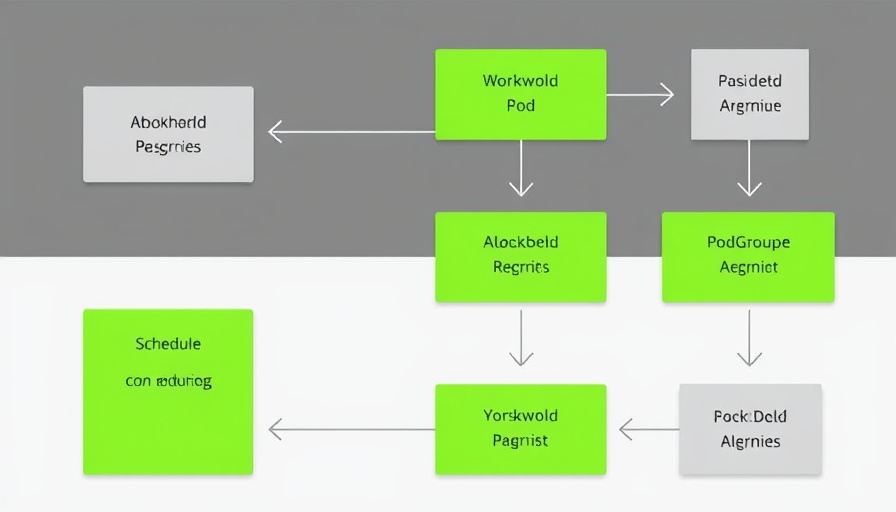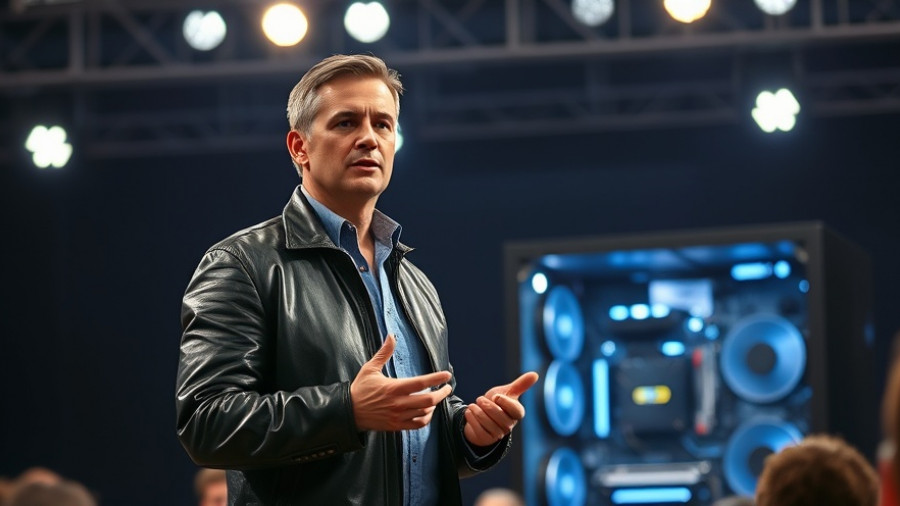
The Evolution of GPU Scheduling: Why KAI Scheduler Matters
NVIDIA's recent announcement of the open-source release of the KAI Scheduler adds a pivotal tool to the landscape of GPU scheduling solutions. As AI workloads continue to grow in complexity, the demand for efficient resource management has surged. KAI Scheduler, originally developed within the Run:ai platform, leverages Kubernetes to address specific challenges faced by IT and ML teams, making it a vital asset for organizations aiming to maximize their computing capabilities.
Understanding the Key Features of KAI Scheduler
One of the standout features of KAI Scheduler is its adaptability to fluctuating GPU demands. Traditional schedulers often falter under varying workloads—one moment a single GPU may suffice for data exploration, the next several GPUs are needed for extensive model training. The KAI Scheduler dynamically reassesses resource allocation in real time, recalibrating fair-share values to match the ongoing needs of its users. This kind of flexibility is crucial for iterating machine learning models swiftly.
How KAI Scheduler Reduces Waiting Times for Compute Access
For machine learning engineers, time is a critical factor. The new scheduler decreases wait times by incorporating strategies such as gang scheduling and GPU sharing. By allowing users to submit batches of jobs with the assurance that tasks will commence as soon as resources become available, it streamlines the workflow immensely. This not only reduces idle time but also instills confidence among practitioners that compute resources will be accessed in alignment with project priorities.
The Innovative Resource Management Techniques
Utilizing techniques like bin-packing, KAI Scheduler combats resource fragmentation effectively. This method maximizes compute utilization, ensuring that smaller tasks are packed into partially used GPUs and CPUs. Additionally, the strategy of spreading workloads evenly across nodes prevents overload on individual resources, thereby enhancing the overall system performance. These methods promote a seamless operational flow in shared resources, critical in environments where multiple users vie for limited GPU access.
Ensuring Resource Guarantees: A Game Changer for Researchers
In shared computing environments, managing resource allocation can lead to inefficiencies—researchers often hoard GPU resources early in the day, risking underutilization. However, KAI Scheduler introduces resource guarantees that enforce fair allocation of GPUs among teams. By ensuring idle resources are dynamically reallocated, researchers can rely on the scheduler to foster collaboration without sacrificing individual team productivity.
The Impact of Open Source on AI Community Collaboration
NVIDIA's commitment to open-source contributions through this release reflects a broader trend in the tech industry. Open-source projects enhance collaboration among developers and researchers, allowing continuous improvement and innovation. As the KAI Scheduler joins the ranks of community-driven projects, it embeds collective learning and adaptation into AI infrastructure.
What This Means for the Future of AI Infrastructure
The release of KAI Scheduler under the Apache 2.0 license signifies a pivotal step towards a more collaborative and efficient AI ecosystem. As organizations adopt this tool, the challenges faced in GPU resource management are set to diminish, fostering an environment of rapid experimentation and innovation.
Conclusion: Embrace the Future of GPU Scheduling
With its several robust capabilities, the KAI Scheduler is poised to redefine the way teams manage AI workloads. The open-source community is encouraged to explore this powerful tool, ask for enhancements, and contribute to its growth. By combining NVIDIA’s robust AI architecture with the collaborative spirit of open-source development, the future looks promising for AI practitioners looking to streamline their research and enhance productivity.
 Add Row
Add Row  Add
Add 




Write A Comment